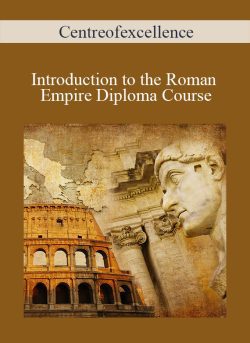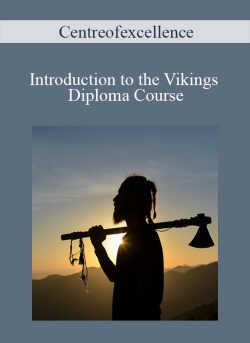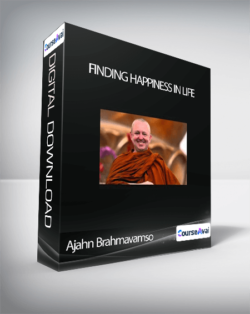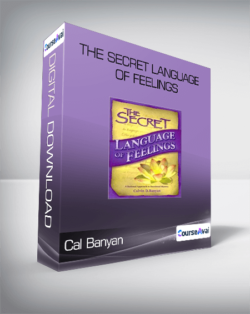Centreofexcellence – Introduction to the Iron Age Diploma CourseWhat Will You Learn?Depending on the region, the period known as the Iron Age started between 1200 and 600 BCE. In some areas, it didn’t begin and end until the start of the Common Era. It was an age that witnessed immense progress but also cultural decline. It triggered a time of war, constant migration, but also settlements of large populations. It was a fascinating period of great contradictions.This course is an introduction to how the Iron Age developed across Europe and other parts of the known world. The main emphasis of the course is on south-east Europe, where the Iron Age is believed to have begun, and central Europe and Britain, which saw the tribal formation of the people we most associate with the Iron Age – the Celts. However, in an effort to give you a more rounded, global picture of this era, you will also be introduced to ironworking and its use in other regions, including India, China, and parts of Africa.The Introduction to the Iron Age Diploma Course begins with an explanation of why the Iron Age is so-called and gives you a context for the various developments that took place during this period. We look at the influence the development of iron had on the sudden deterioration of major civilisations and examine the effect of iron on the world in general.We explore how iron was developed and used around the world, and look at other advances that happened alongside it. We examine ironworking in places as far apart as Africa and India, but also in the Near East – the region where it likely all began.Most of us equate the Iron Age with the Celts. We take a look at this group of people but also the various ethnic groups that grew to dominate the East Mediterranean area, including the Hittites, Philistines, Phoenicians, and the Persians.Two great art movements developed during this period – the Mediterranean art movement, which developed out of the post-Greek Dark Ages, and Celtic artwork, which was typical of the Iron Age in central and northern Europe. We examine the different styles and objects created during this time. We also take a look at the structures that most typically represented the architecture of Britain and Central Europe during the Iron Age. These include roundhouses and hillforts, but also encompass brochs and wheelhouses – buildings unique to Northern Scotland.The Iron Age saw innovations and developments in farming and food production. We’ll explore the types of foods the Iron Age communities were eating, and how they expanded on these. We’ll also look at the various new tools that were developed, such as the ard and the potter’s wheel, which had a significant influence on farming methods and, by association, standards of living.We’ll observe what daily life in the Celtic society of Iron Age Britain looked like – the various chores to be completed, how society was defined, the clothing that was worn and how it was made, how leisure time was spent and the music that was played.Noted for being an era of great violence, you’ll be guided through the array of weapons that were developed and used on the battlefield, as well as the use of horses in war and the development of cavalry warfare.While little is truly known about the spiritual practices and beliefs of the Iron Age people, we consider the evidence that does exist and what it tells us about primarily Celtic and north-east European spirituality.The course concludes with a look at three specific ‘endings’ of the Iron Age – that of the beginning of historiography, the arrival of the Romans to British shores, and the rise of the Viking Age in Scandinavia.By the end of this course, you will:Understand what is meant by the Iron Age Know where it is believed to have started and how it developed Be aware of the different time periods and regions in which the Iron Age occurred Know who the main peoples of the Iron Age were Have a deeper knowledge of the kind of building structures that were built in Europe and Britain during this time Know the major art movements of the Iron Age Be aware of the developments and innovations that occurred in agriculture Comprehend how the Iron Age influenced war Be familiar with how people lived in Iron Age Britain Have an understanding of the religious beliefs of the time Know the three events that are often associated with the end of the Iron AgeCourse SyllabusWhat will I learn on the course?Certified Course Accredited CourseModule 1: Defining the Iron Age 6 partsModule 2: The Iron Age Around the World 8 partsModule 3: The People of the Iron Age 4 partsModule 4: Iron Age Art 4 partsModule 5: Iron Age Architecture 4 partsModule 6: Farming and Food 4 partsModule 7: Iron Age Society 4 partsModule 8: Technology and Warfare 5 partsModule 9: Iron Age Religion and Beliefs 5 partsModule 10: The End of the Iron Age 6 partsSalepage: https://www.centreofexcellence.com/shop/introduction-to-the-iron-age-diploma-course/ Archive: https://archive.fo/z8BeLDelivery Method– After your purchase, you’ll see a View your orders link which goes to the Downloads page. Here, you can download all the files associated with your order.– Downloads are available once your payment is confirmed, we’ll also send you a download notification email separate from any transaction notification emails you receive from esy[GB].– Since it is a digital copy, our suggestion is to download and save it to your hard drive. In case the link is broken for any reason, please contact us and we will resend the new download link.– If you cannot find the download link, please don’t worry about that. We will update and notify you as soon as possible at 8:00 AM – 8:00 PM (UTC+8).Thank You For Shopping With Us!
 Centreofexcellence – Introduction to the Roman Empire Diploma Course
₹10,624.00
Centreofexcellence – Introduction to the Roman Empire Diploma Course
₹10,624.00
 Centreofexcellence – Introduction to the Vikings Diploma Course
₹10,624.00
Centreofexcellence – Introduction to the Vikings Diploma Course
₹10,624.00
Centreofexcellence – Introduction to the Iron Age Diploma Course
₹10,624.00






